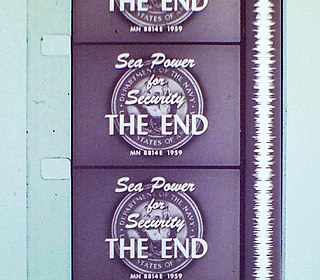Cine 160 is a 35 mm film projection process proposed by Allan Silliphant whereby a single frame of film would occupy a length of six film perforations. This could then be used for either of two currently proposed applications: 3D film projection from two images each occupying 3 perforations (thus attaining a 1.85 aspect ratio already in common use), or making anamorphically squeezed prints of 1.85 ratio films, which would use a greater amount of image area. The system is named Cine 160 because the six-perf frame uses 1.60 times the area of a conventional print. This system has not yet received any mainstream application, however, and it is unknown how receptive theater owners will be to the prospect, which will require significant expenses to re-fit projectors to the format.

Widescreen images are displayed within a set of aspect ratios used in film, television and computer screens. In film, a widescreen film is any film image with a width-to-height aspect ratio greater than 4:3 (1.33:1).

35 mm film is a film gauge used in filmmaking, and the film standard. In motion pictures that record on film, 35 mm is the most commonly used gauge. The name of the gauge is not a direct measurement, and refers to the nominal width of the 35 mm format photographic film, which consists of strips 1.377 ± 0.001 inches (34.976 ± 0.025 mm) wide. The standard image exposure length on 35 mm for movies is four perforations per frame along both edges, which results in 16 frames per foot of film.

70 mm film is a wide high-resolution film gauge for motion picture photography, with a negative area nearly 3.5 times as large as the standard 35 mm motion picture film format. As used in cameras, the film is 65 mm (2.6 in) wide. For projection, the original 65 mm film is printed on 70 mm (2.8 in) film. The additional 5 mm contains the four magnetic stripes, holding six tracks of stereophonic sound. Although later 70 mm prints use digital sound encoding, the vast majority of existing and surviving 70 mm prints pre-date this technology.

16 mm film is a historically popular and economical gauge of film. 16 mm refers to the width of the film ; other common film gauges include 8 mm and 35 mm. It is generally used for non-theatrical film-making, or for low-budget motion pictures. It also existed as a popular amateur or home movie-making format for several decades, alongside 8 mm film and later Super 8 film. Eastman Kodak released the first 16 mm "outfit" in 1923, consisting of a Ciné-Kodak camera, Kodascope projector, tripod, screen and splicer, for US$335. RCA-Victor introduced a 16 mm sound movie projector in 1932, and developed an optical sound-on-film 16 mm camera, released in 1935.
IMAX is a proprietary system of high-resolution cameras, film formats, film projectors, and theaters known for having very large screens with a tall aspect ratio and steep stadium seating, with the 1.43:1 ratio format being available only in few selected locations.

CinemaScope is an anamorphic lens series used, from 1953 to 1967, and less often later, for shooting widescreen films that, crucially, could be screened in theatres using existing equipment, albeit with a lens adapter.

Anamorphic widescreen is a process by which a widescreen image is horizontally compressed to fit into a storage medium with a narrower aspect ratio, reducing the horizontal resolution of the image while keeping its full original vertical resolution. Compatible play-back equipment can then expand the horizontal dimension to show the original widescreen image. This is typically used to allow one to store widescreen images on a medium that was originally intended for a narrower ratio, while using as much of the frame – and therefore recording as much detail – as possible.

A movie projector is an opto-mechanical device for displaying motion picture film by projecting it onto a screen. Most of the optical and mechanical elements, except for the illumination and sound devices, are present in movie cameras. Modern movie projectors are specially built video projectors.
Negative pulldown is the manner in which an image is exposed on a film stock, described by the number of film perforations spanned by an individual frame. It can also describe whether the image captured on the negative is oriented horizontally or vertically. Changing the number of exposed perforations allows a cinematographer to change both the aspect ratio of the image and the size of the area on the film stock that the image occupies.

Todd-AO is an American post-production company founded in 1953 by Mike Todd and Robert Naify, providing sound-related services to the motion picture and television industries. The company retains one facility, in the Los Angeles area.

Panavision Inc. is an American motion picture equipment company founded in 1954 specializing in cameras and lenses, based in Woodland Hills, California. Formed by Robert Gottschalk as a small partnership to create anamorphic projection lenses during the widescreen boom in the 1950s, Panavision expanded its product lines to meet the demands of modern filmmakers. The company introduced its first products in 1954. Originally a provider of CinemaScope accessories, the company's line of anamorphic widescreen lenses soon became the industry leader. In 1972, Panavision helped revolutionize filmmaking with the lightweight Panaflex 35 mm movie camera. The company has introduced other cameras such as the Millennium XL (1999) and the digital video Genesis (2004).

Techniscope or 2-perf is a 35 mm motion picture camera film format introduced by Technicolor Italia in 1960. The Techniscope format uses a two film-perforation negative pulldown per frame, instead of the standard four-perforation frame usually exposed in 35 mm film photography. Techniscope's 2.33:1 aspect ratio is easily enlarged to the 2.39:1 widescreen ratio, because it uses half the amount of 35 mm film stock and standard spherical lenses. Thus, Techniscope release prints are made by anamorphosing, enlarging each frame vertically by a factor of two.

Technirama is a screen process that has been used by some film production houses as an alternative to CinemaScope. It was first used in 1957 but fell into disuse in the mid-1960s. The process was invented by Technicolor and is an anamorphic process with a screen ratio the same as revised CinemaScope (2.35:1), but it is actually 2.25:1 on the negative.

Univisium is a proposed universal film format created by cinematographer Vittorio Storaro, ASC, AIC and his son, Fabrizio, to unify all future theatrical and television films into one respective aspect ratio of 2:1.

The Academy ratio of 1.375:1 is an aspect ratio of a frame of 35 mm film when used with 4-perf pulldown. It was standardized by the Academy of Motion Picture Arts and Sciences as the standard film aspect ratio in 1932, although similar-sized ratios were used as early as 1928.

Film perforations, also known as perfs and sprocket holes, are the holes placed in the film stock during manufacturing and used for transporting and steadying the film. Films may have different types of perforations depending on film gauge, film format, and intended usage. Perforations are also used as a standard measuring reference within certain camera systems to refer to the size of the frame.
Super Panavision 70 is the marketing brand name used to identify movies photographed with Panavision 70 mm spherical optics between 1959 and 1983. It has since been replaced by Panavision System 65.

Ultra Panavision 70 and MGM Camera 65 were, from 1957 to 1966, the marketing brands that identified motion pictures photographed with Panavision's anamorphic movie camera lenses on 65 mm film. Ultra Panavision 70 and MGM Camera 65 were shot at 24 frames per second (fps) using anamorphic camera lenses. Ultra Panavision 70 and MGM Camera 65's anamorphic lenses compressed the image 1.25 times, yielding an extremely wide aspect ratio of 2.76:1.

The Stewardesses is a 1969 American 3D softcore comedy film written and directed by Allan Silliphant and starring Christina Hart, Monica Gayle, Paula Erickson and Donna Stanley.

Anamorphic format is the cinematography technique of shooting a widescreen picture on standard 35 mm film or other visual recording media with a non-widescreen native aspect ratio. It also refers to the projection format in which a distorted image is "stretched" by an anamorphic projection lens to recreate the original aspect ratio on the viewing screen.